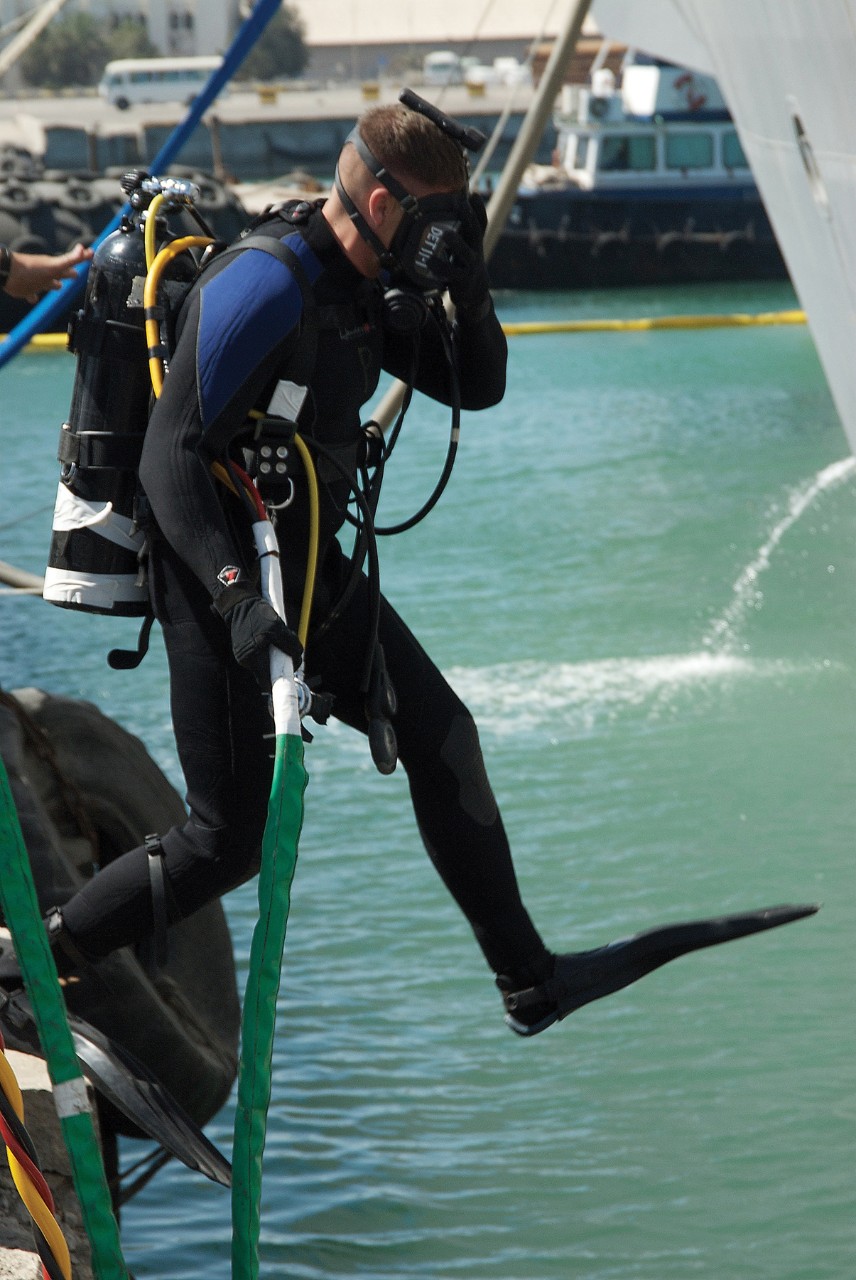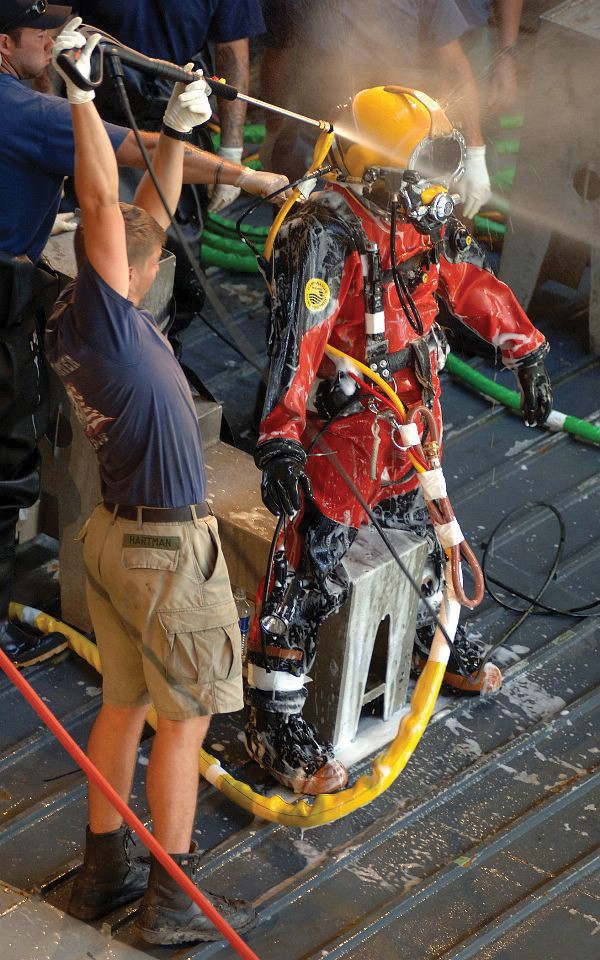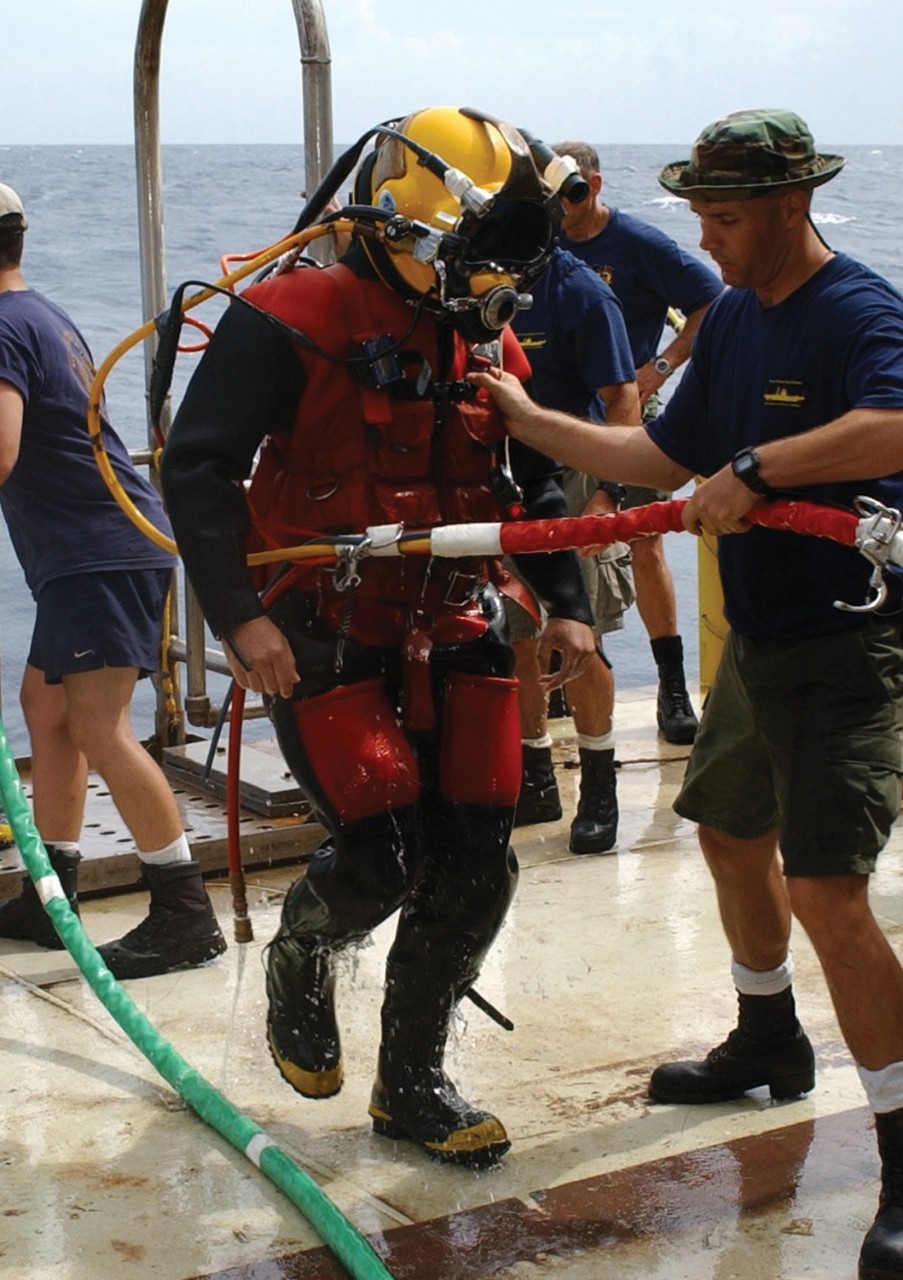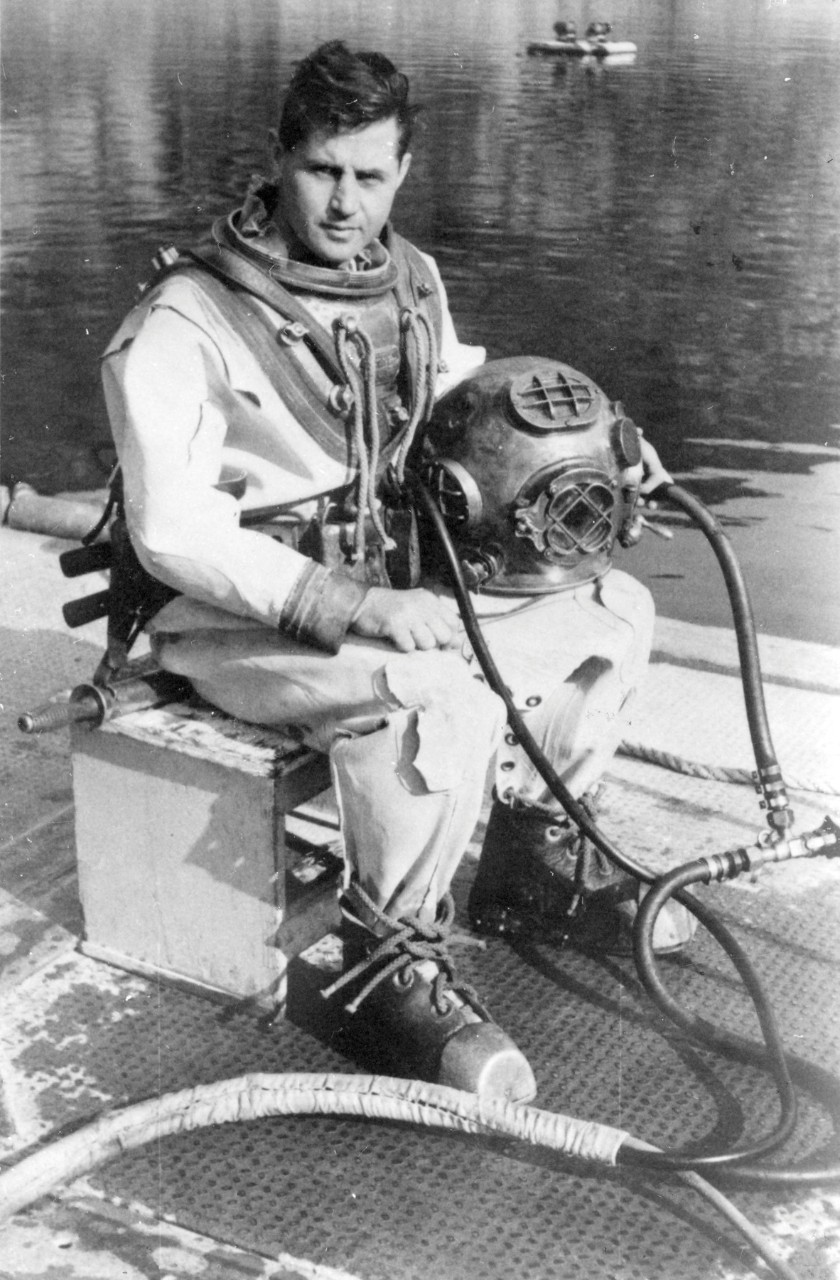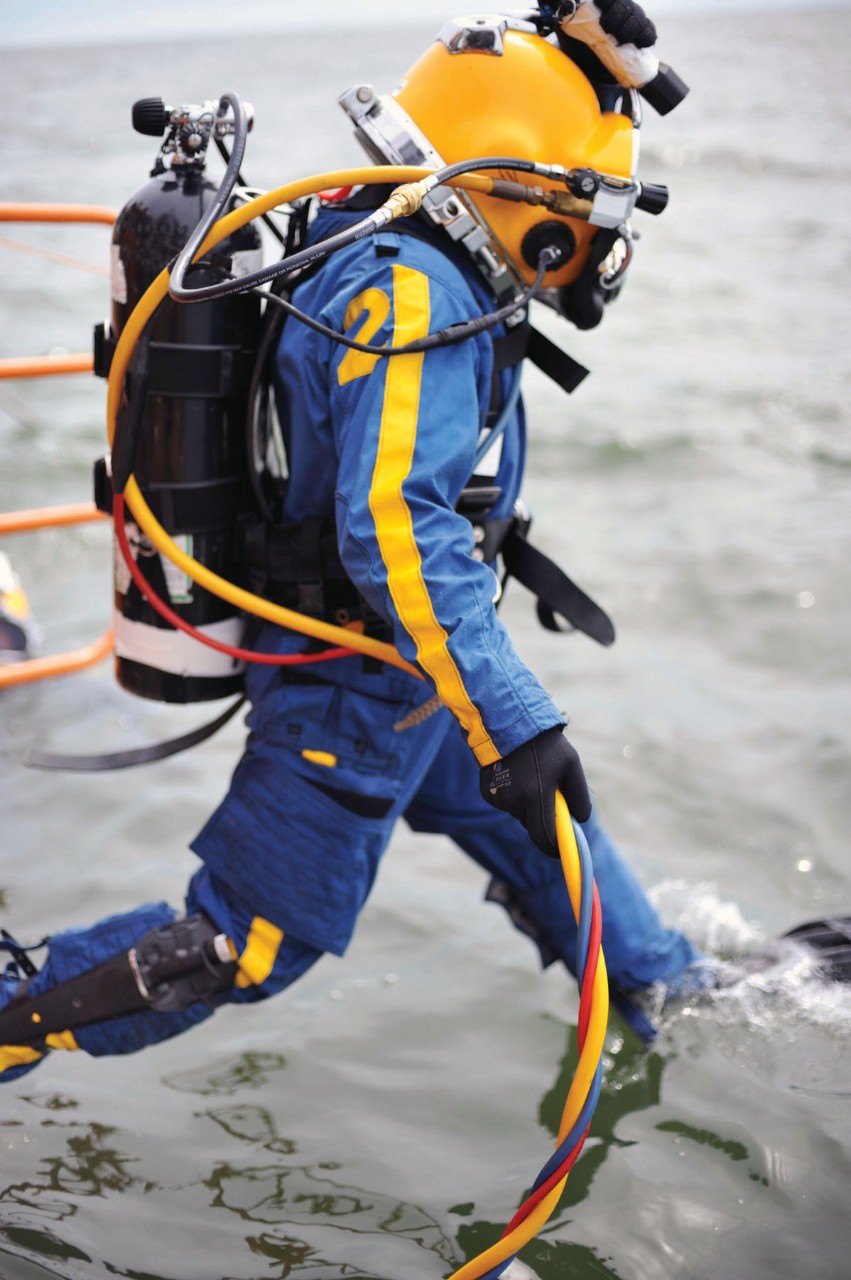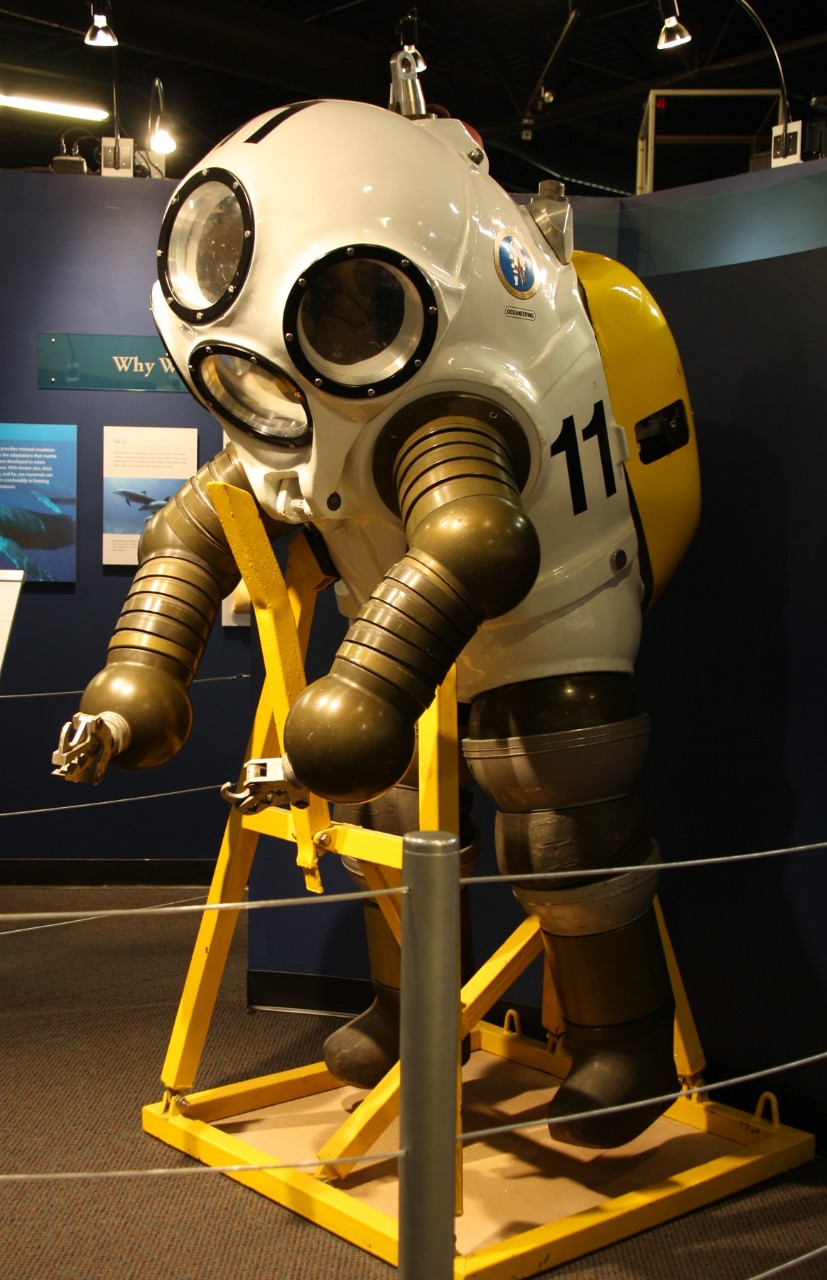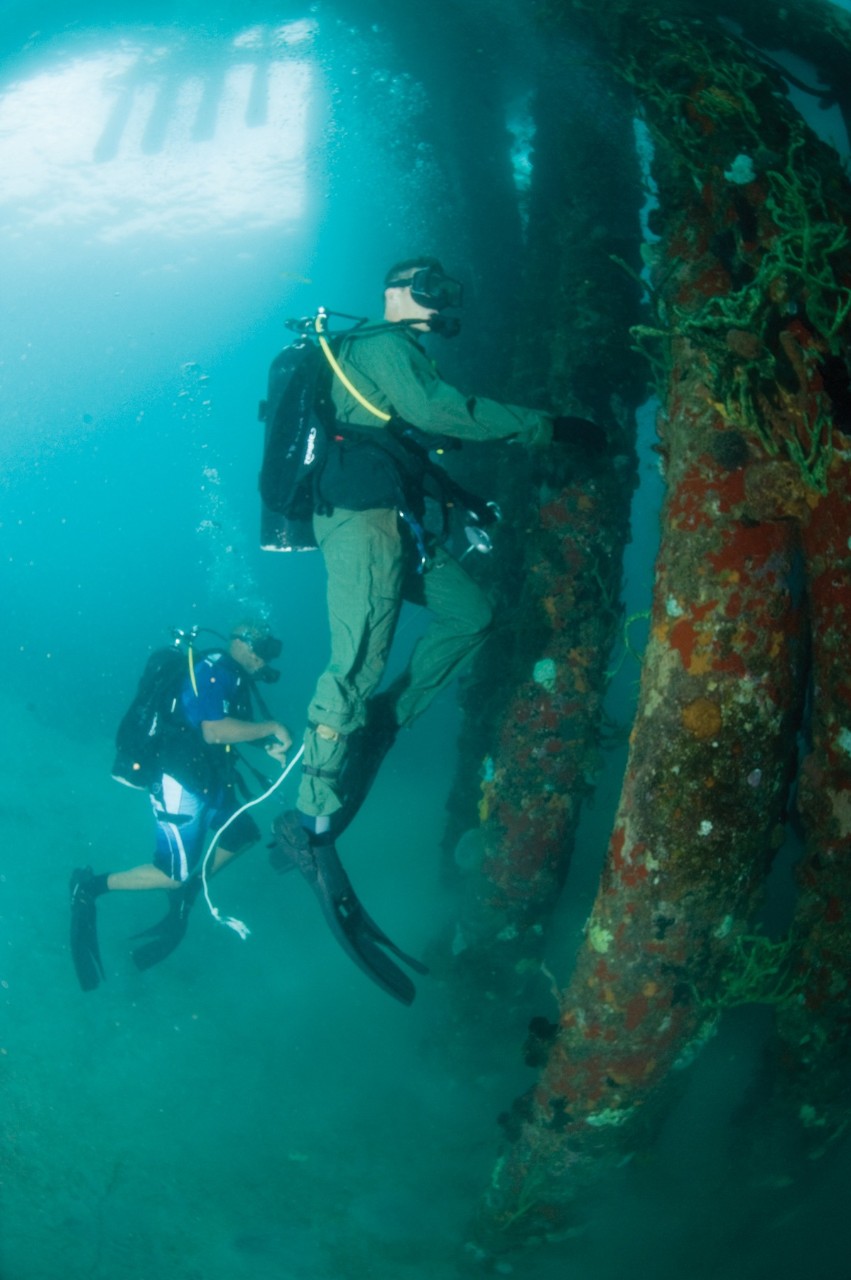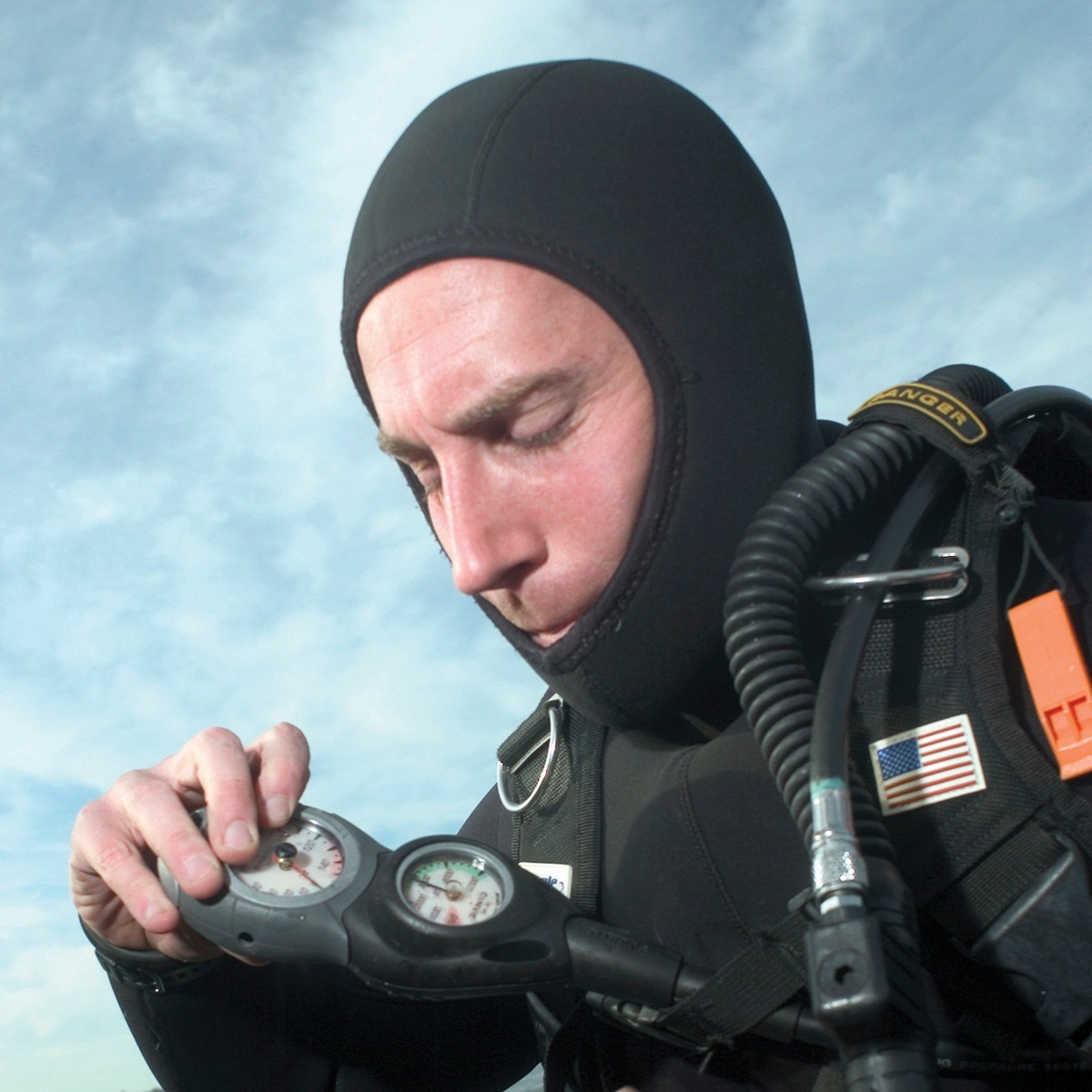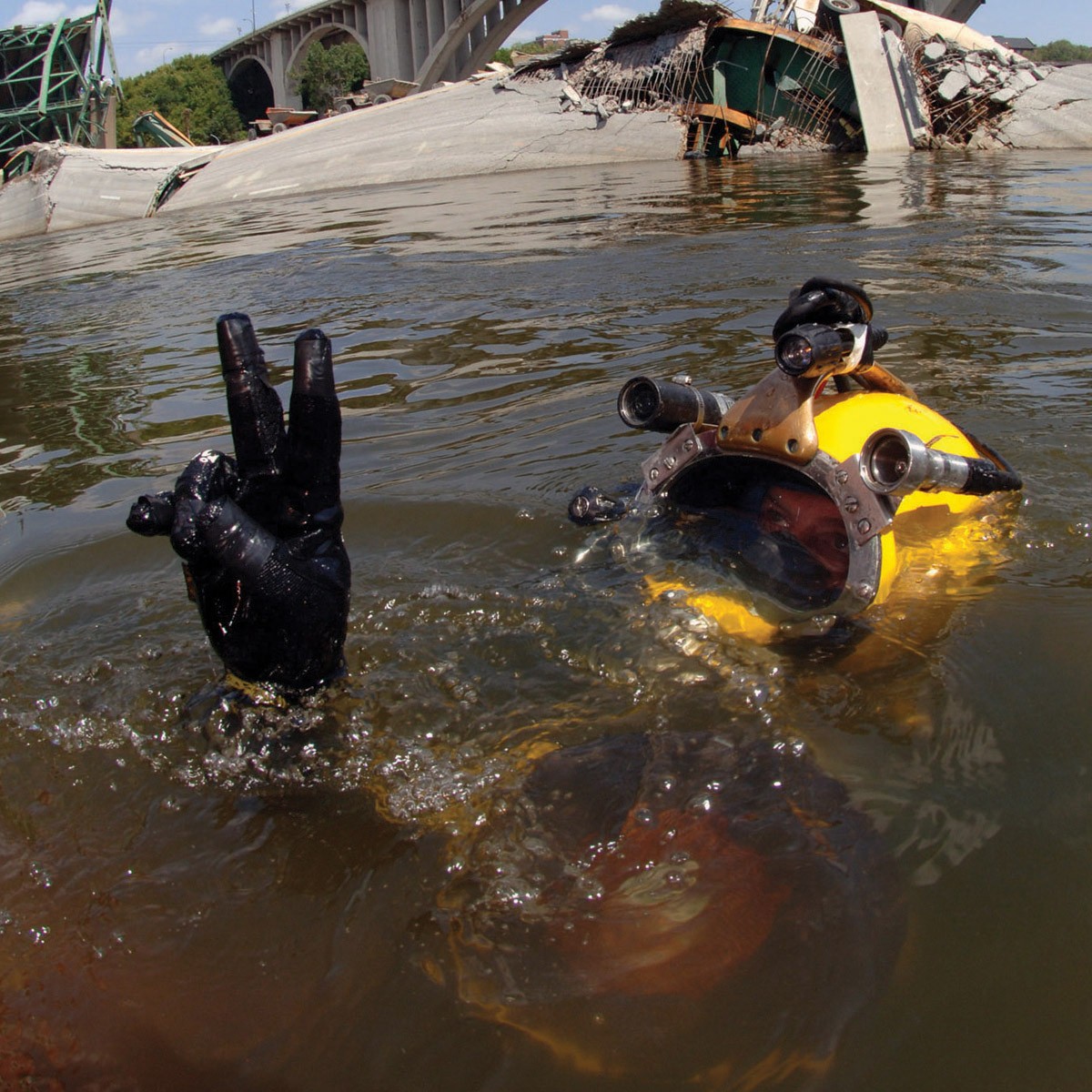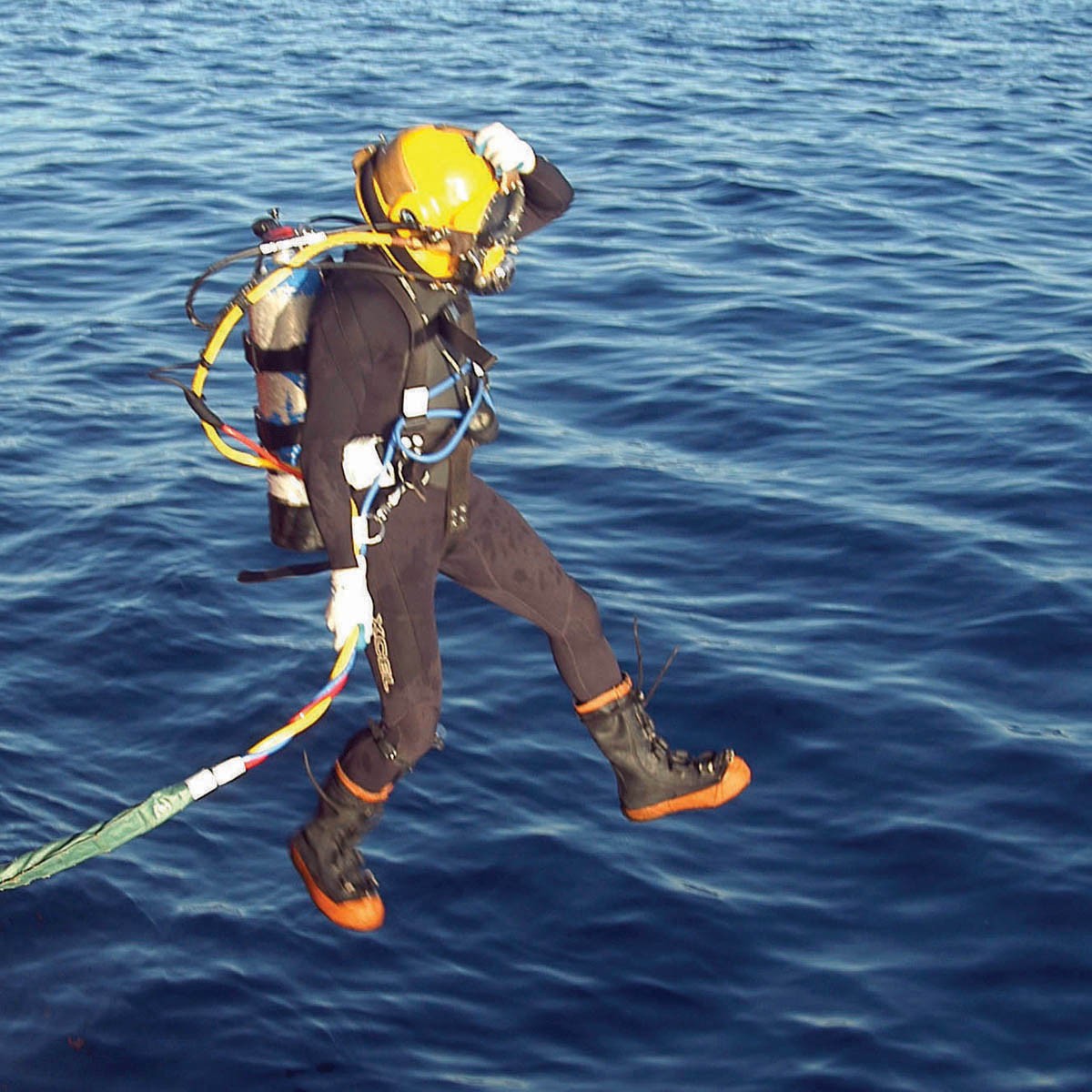The Skin They're In: U.S. Navy Diving Suits
The Skins U.S. Navy Divers Work In
The Navy employs a range of diving gear to ensure its divers are protected in every type of environment. Most are ambient pressure ("soft") suits, meaning they protect their wearers from the cold and the environment, but not from the pressure of the water. For extreme depths, divers use atmospheric pressure ("hard") suits that maintain the surface pressure inside. Divers select which suits to wear based on the conditions - temperature, environment, work to be completed - in which they will dive.
Click photograph for a larger image.
Wet Suit
The wet suit is the suit most commonly used by Navy divers today for missions in shallow, warm water. Water permeates these Neoprene suits, but a properly fitted garment minimizes the amount of water touching the skin, improving body heat retention. Wet suits are lighter, more comfortable, and easier to slip on and off than other types of ambient pressure diving suits. Divers often put on wet suits under other diving suits or coverings for added warmth.
Photo: Chief Diver Jason Potts of Mobile Diving and Salvage Unit Two jumps into the waters off Bahrain in a wet suit to perform an underwater inspection.
Dry Suit
Divers choose dry suits for heavy duty and contaminated water operations, as they offer more physical and thermal protection than wet suits. Thick Neoprene and watertight rubber seals at the neck and wrists create a closed environment that prevents water and pollutants from reaching the body. The loose fit of dry suits also allows divers to wear warm fabric undergarments that trap air underneath the suit.
Photo: Dive tenders wash down a diver's dry suit to sanitize it after a post-Hurricane Katrina contaminated water dive.
Hot Water Suit
Hot water suits supply heat to Navy divers in very cold environments, letting them make longer and deeper dives. Tubes embedded in the suits receive a constant supply of hot water from the surface that divers can control via regulating valves. Cooled water exits through tubes at the wrists and ankles as fresh hot water replaces it.
Photo: A diver hurries toward the decompression chamber after completing a deep dive in a hot water suit during the 2002 USS Monitor salvage operation.
Mark V Diving Dress
Navy deep sea divers wore the heavy Mark V (five) diving dress from 1918 to 1984. Used for deep sea and salvage diving, the Mark V allowed divers to work at much deeper depths than had previously been feasible. The durable rubberized-canvas suit offered divers protection from cold, contaminated waters and dangerous work environments. Wrist cuffs and a rubber neck seal created a watertight system, and divers stayed warm with wool undergarments layered beneath the suit.
Photo: Navy diver George W. McCullough awaits a dive in a Mark V diving suit at the Naval Ordinance Test Station at Morris Dam.
Mark 12 Outer Garment
The Navy developed the Mark 12 surface support diving system (SSDS) in the late 1970s. Lighter and more durable than the Mark V diving dress, the Mark 12 SSDS became the Navy's official diving system in 1985. The Mark 12 system was replaced in turn by the Mark 21 helmet in 1993, but Navy divers continue to wear the Mark 12 outer garment today. Layered over a Neoprene wet suit, the outer garment provides protection from jagged metals, carbon fibers, and rough materials.
Photo: Navy diver Jeremy Weber of Mobile Diving and Salvage Unit Two jumps into Lake Victoria in Uganda wearing a Mark 12 outer garment during a search and recovery operation.
Atmospheric Diving Suits
Initially pioneered for commercial use in the oil industry, Atmospheric Diving Suits (ADS) were subsequently developed by the Navy to assist with submarine rescue missions. The pressure inside ADS is the same as surface pressure, so divers in ADS can work at extreme depths (up to 2,000 feet) without needing to decompress afterwards.
Photo: The JIM suit was one of the earliest successful ADS. Inventor Joseph Peress named the suit for diver Jim Jarrett, who tested it in the early 1930s.
Flight Suit
For quick tasks in warm, uncontaminated water, Navy divers may choose lightweight coverings such as flights suits, camouflage clothing, coveralls, and t-shirts and shorts. These fabric coverings offer some extra protection and warmth while maximizing comfort and maneuverability.
Photo: Michael Faasen of Mobile Diving and Salvage Unit Two wears a lightweight flight suit as he conducts a pier inspection off the coast of Dominica.
Extra Coverings
Uncovered heads, hands, and feet lose heat more rapidly than other parts of the body because in cold water, the heart pumps extra blood to the torso to
keep the body functioning normally. To combat this heat loss and to provide physical protection, divers wear hoods, gloves, and boots with their diving suits. As with diving suits, divers choose this type of equipment based on the conditions in which they will work.
Photo: Navy Chief Isaac Callicrate dons a hood before a hazard sweep (top); Navy diver Joshua Harsh gives a signal in his diving gloves (center); Gunner's Mate Shannon Hall wears boots during underwater maintenance training (bottom).

